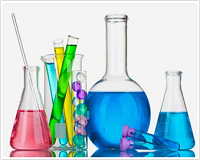"As per Chinese Textile Industry Association, the textile industry uses 25 per cent of global chemical output. Out of this 42 per cent is used by China reveals the United Nations Environment Program. Greenpeace published a report, Dirty Laundry in 2011 that urged consumers worldwide to demand change in the fashion industry. The report outlined the wastewater in textile industry zones of Guangdong and Zhejiang contained cancer causing chemicals harmful to reproduction. Supply chain investigations linked the products from those factories with global brands like Adidas, Nike, H&M and Zara."
 As per Chinese Textile Industry Association, the textile industry uses 25 per cent of global chemical output. Out of this 42 per cent is used by China reveals the United Nations Environment Program. Greenpeace published a report, Dirty Laundry in 2011 that urged consumers worldwide to demand change in the fashion industry. The report outlined the wastewater in textile industry zones of Guangdong and Zhejiang contained cancer causing chemicals harmful to reproduction. Supply chain investigations linked the products from those factories with global brands like Adidas, Nike, H&M and Zara.
As per Chinese Textile Industry Association, the textile industry uses 25 per cent of global chemical output. Out of this 42 per cent is used by China reveals the United Nations Environment Program. Greenpeace published a report, Dirty Laundry in 2011 that urged consumers worldwide to demand change in the fashion industry. The report outlined the wastewater in textile industry zones of Guangdong and Zhejiang contained cancer causing chemicals harmful to reproduction. Supply chain investigations linked the products from those factories with global brands like Adidas, Nike, H&M and Zara.
A few months later Chinese non-governmental organisations, including the Institute for Environmental and Public Affairs and Friends of Nature, published a report on fashion’s polluting practices, warning global mega-brands of severe breaches of regulation in their Chinese supply chains, with a grave impact on the country’s water environment”.
Leading manufacturers like Inditex (Zara’s owner) and H&M, along with Puma, Nike and Adidas, are committed to ending the release of harmful substances from their supply chains by 2020. The key elements of that commitment include management of chemicals used in the supply chain, information transparency and the replacement of harmful chemicals with alternatives.
Companies detox to rid off harmful chemicals
Before the report was published, the textile industry focused on the quality of products and use of chemicals in them. As per the report, 80 fashion brands and suppliers, accounting for 15 per cent of the global clothing market, have agreed to “detox”. These companies are setting up a Manufacturing Restricted Substances List (MRSL), often described as a harmful substances blacklist that can guide the elimination of harmful chemicals from the manufacturing process.
them. As per the report, 80 fashion brands and suppliers, accounting for 15 per cent of the global clothing market, have agreed to “detox”. These companies are setting up a Manufacturing Restricted Substances List (MRSL), often described as a harmful substances blacklist that can guide the elimination of harmful chemicals from the manufacturing process.
In 2012, H&M published its MRSL along with a list of endorsed alternative chemicals. It then started training suppliers to understand the importance of these changes.
Managing and replacing harmful chemicals
Management of these chemicals involves the entire supply chain including the wet processing stage, where companies have to provide training and technical support to build these capacities from scratch. Supply chain transparency can help this process if companies publicise their progress and ensure that more suppliers make wastewater monitoring data public.
Ultimately, we need to replace the chemicals that cause harm but cost and availability of alternatives is the toughest part of the process. The role of industry consensus in this can be deciphered from the replacement of dimethly fumarate (DMF). A widely used solvent in the textile and leather industry, DMF was listed by the EU as a Substance of Very High Concern (SVHC) for being hazardous to health. On searching for an alternative, fashion brands found a solution of synthetic leather and so several major firms required the removal of DMF from their supply chains, with deadlines ranging from 2020 to 2025.
Policies for making chemical management easier
Spurred by the emergence of online shopping and e-commerce, the textile and clothing industry is dominated by small firms, which makes change more difficult. In China, many factories supply lesser-known brands, or produce cheap unbranded clothing. This means the bulk of the clothing supply chain is not subject to strict chemicals management.
H&M’s Veera Sinnemaki agrees government policy is needed for the industry to change. Policies holding chemical companies accountable will make chemical management much easier for both brands and suppliers. In April, a number of large Chinese suppliers of dyes, additives and chemicals to the clothing sector launched a voluntary initiative to produce a ‘Manufacturing Restricted Substances List’ and a positive list of preferred substances that apply to their own sector. This would integrate several existing industry standards.












